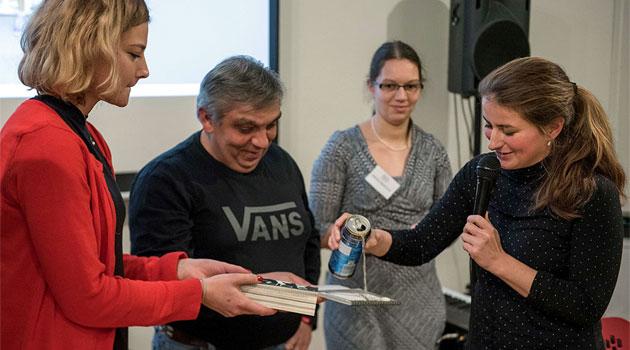Czech artist's guide to Brno neighborhood nominated for award, Romani activists are not happy

A guidebook to the neighborhood in Brno colloquially referred to as the “Bronx” that has been published by artist Kateřina Šedá, has been previously reported about and reviewed by news server Romea.cz. The book, entitled “Brnox”, has now been nominated for the Magnesia Litera award in the category of “Journalism”.
“Kateřina Šedá develops her work in a fine art context, but most of it exceeds what is customarily understood beneath that concept. She is an initiator of events that reveal the surprising substrata to what seem to be everyday banalities,” reads the website of the contest.
“The book, in a distinctive way, parodies a standard tourists’ guidebook, but also exceeds that format through its unusually suggestive insight into the atmosphere of the environment and the thinking of the people living there. The project, which began life as a ‘happening’, has resulted in an amusing, fruitful, thorough reportage from the places that so-called polite society prefers to avoid,” the contest nomination reads.
News server Romea.cz asked the Romani activist and poet Renata Berkyová and the Romani activist Jan Čonka their opinion of the nomination. “To be honest, I was rather shocked,” said Berkyová.
“The jury highlights what I personally consider to be the book’s biggest weaknesses. In their description they say that the book is the result of several years of research, but if all that came out of those years was this collage, then the research was a waste of time, in my opinion. Morover, the book only mentions the year 2016 everywhere, so I would be interested to know whether that is just the author’s mystification, or if it is an amateurish adaptation of facts,” the poet wrote.
“In addition, the jury is also underlining that the book is supposed to ‘reflect the thinking of local people’. Isn’t it rather a reflecton of the thinking of the author, who has folded together a mish-mash of material to give an impression of what the current reality of the ‘Bronx’ is? I can’t avoid feeling that the idea to do this guidebook came after she had collected the ‘funniest’ answers from people and a bunch of archival material that otherwise doesn’t fit together,” said Berkyová.
“What’s more, the jury is also underscoring the questionnaires used, which they believe supposedly involved demanding field work to compile. In that context I would be interested to know, for example, the opinion of anthropologists as to how demanding such field work is. Lastly, just a few words about the jokes that run through the entire publication. To me, personally, the impression they give is that they were taken from a pocket guide to cheap laughs, anonymized, and no doubt absolutely stripped of their context. Whether you’re asking people which toilet paper they prefer or what ‘Brnox’ actually is, you’re only going to get a stupid answer. I’m really sorry that the author, after a year of work, never gained a feeling of at least minimal respect for the people she has based her would-be artistic achievement on,” concluded activist and poet Berkyová.
Jan Čonka views the book’s nomination similarly. “The book Šedá has written seems to me to be full of basic stereotypes about Romani people,” he said.
“I am convinced that what she has written has pushed Romani people even more to the periphery than they already were. I was surprised by this nomination and wondered who basically is choosing the books for it. I cannot comprehend why this book is so admired. I take it as a bad joke,” the Romani activist said.